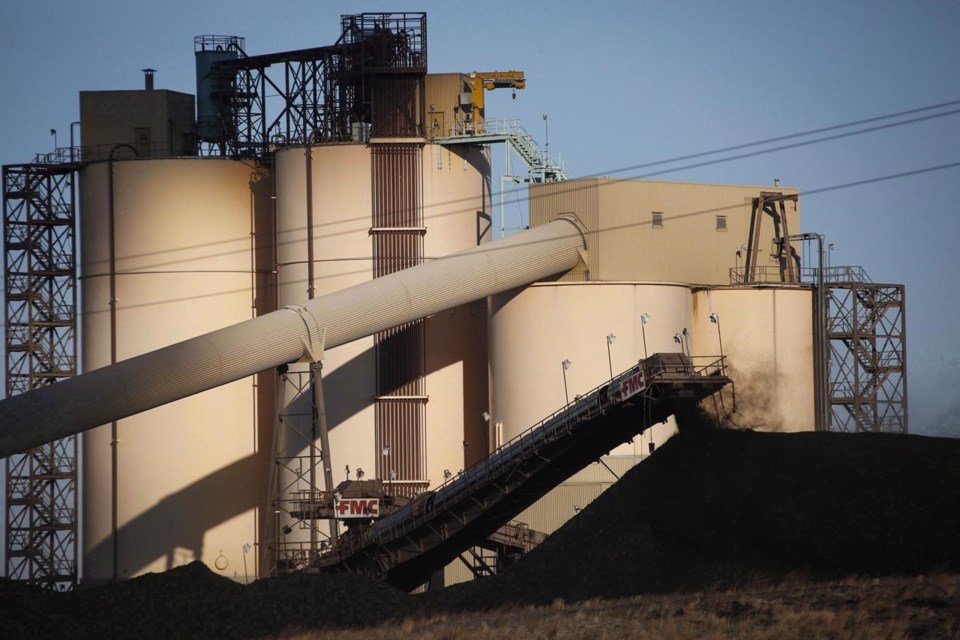EDMONTON — The Alberta government is to face at least two court challenges in the new year over its decision to rescind decades-old protections and open the eastern slopes of the Rocky Mountains to coal mining.
Landowners and the Ermineskin and Whitefish Lake First Nations have filed separate requests for a judicial review of the decision, which they argue was made without legally required consultations.
"It really focuses in on the lack of consultation our clients received," said Richard Harrison, lawyer for several ranchers whose grazing leases overlap with land now available for open-pit, steelmaking coal mines.
"That one act — on the Friday before the May long weekend — to rescind the coal policy really had a detrimental effect."
Harrison said the requests are to come up in court the week of Jan. 18. A judge is to hear an argument from Alberta to have the applications dismissed and who will get intervener status if they go ahead.
Documents filed suggest government lawyers will argue that policies are not the same as legislation and can be changed unilaterally.
Alberta Energy did not respond to a request for responses it has filed with the court.
The eastern slopes comprise some of Alberta's most ecologically valuable land — habitat for threatened species as well as the headwaters of rivers millions of Albertans rely on for water.
In May, the United Conservative government announced it would remove rules for coal development in the region that had been in place since 1976. They set zones allowing no development in the most sensitive land and progressively more activity in proportion to the environmental value of the land.
The classifications were applied in advance of any assessment by the Alberta Energy Regulator.
Under the new policy, only the top designation remains. Mine proposals on all other land now go directly to the regulator.
Although it imposes conditions on development, the Alberta Energy Regulator has never turned a proposal down.
Court documents show the applicants will argue that both Alberta legislation and common practice require the province to consult with anyone affected before making land-use decisions. They point to the Alberta Land Stewardship Act and various land-use plans that have been agreed to over the years.
"There's a common law right to consultation when a government decision is going to affect you," said Harrison.
Legislation stipulates that whenever a land-use plan is changed or amended, appropriate public consultation must be carried out. The change must also be tabled in the legislature.
The applicants argue that a series of coal mines constitute a change in land use.
The Livingstone Landowners Group, which has asked to intervene, says its 2,500 members have worked with the province for years on managing competing uses.
"The province has always led us to believe that land-use planning needs input from local people," said president Bill Trafford. "Then they go, 'That's not convenient anymore.' "
Harrison said an Alberta Energy document shows the government chose to move unilaterally despite warnings from officials.
In that document, entered into the court record, Alberta Energy officials warned minister Sonya Savage that dismissing the coal policy on her own carried risks.
"It will draw criticism from environmental groups and other user groups active within Alberta's eastern slopes, particularly if the decision is made without prior public consultation."
It also warned that land-use plans agreed to over the years would be dramatically affected by removing the protections, leaving what it called "policy gaps."
One proposed coal mine, the Grassy Mountain project near the headwaters of the Oldman River, is before a joint federal-provincial review panel. Several others are waiting.
Earlier this month, the province sold coal leases for about 2,000 hectares on the eastern slopes. Land leased for coal now stretches in an almost unbroken swath for nearly 60 kilometres in Alberta's southwest corner.
This report by The Canadian Press was first published Dec. 24, 2020.
Bob Weber, The Canadian Press



